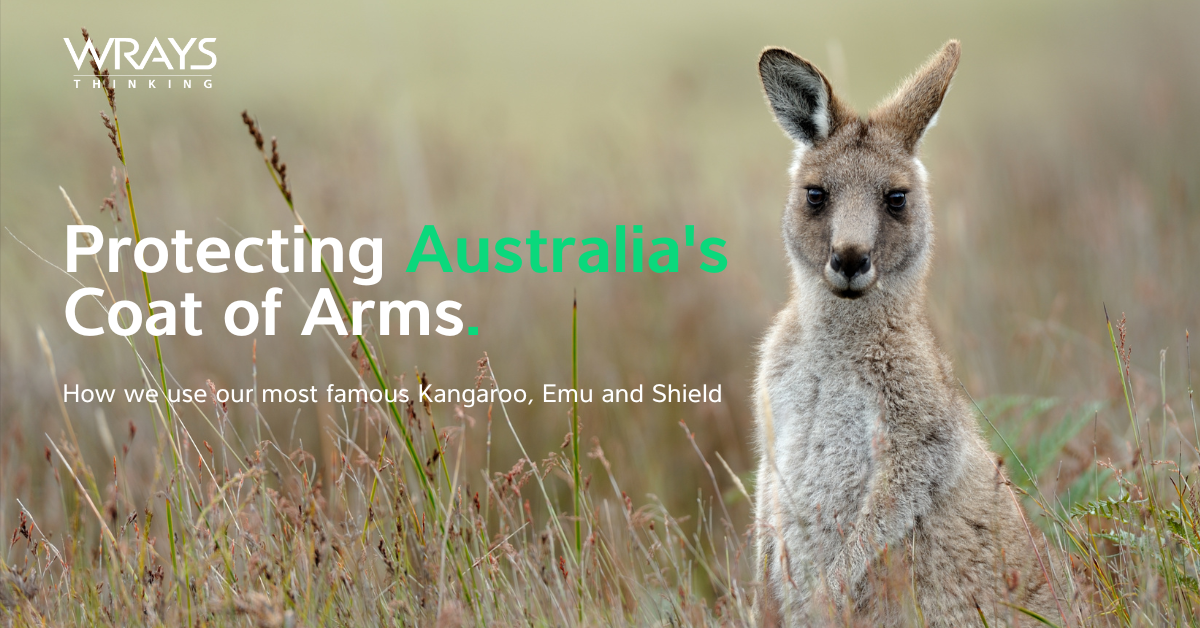How we use our most famous Kangaroo, Emu and Shield
Since the recent passing of Queen Elizabeth II, there has been speculation as to whether the Royal Arms would need to change and whether Royal Warrants granted by Her Majesty are still valid.
A Royal Warrant of Appointment is granted as a mark of recognition to people or companies who have regularly supplied goods or services to the Monarch or their Households. In the UK, a business can apply for a Royal Warrant which, if granted, allows it to display the coat of arms of the Royal Household (Royal Arms) on, or in relation to, the business’s goods or services.
In Australia, there is no equivalent to the Royal Warrant, but rules still apply.
Australia’s first coat of arms, granted by King George V, was in use from 1908 to 1912. It depicted a kangaroo and emu holding up the shield with the words “Advance Australia” underneath. Interestingly, while the original version had small shields representing the six states, it was only the St George’s cross (used for New South Wales) that appeared on the shield.
It probably isn’t surprising that in 1912 a new coat of arms (the Arms) was adopted with the symbols of the six states appearing on the shield. Apart from the original colour version of the Arms, there are now different versions available for use such as a black and white version and a stylised version of the Arms.
Australia doesn’t have a Royal Warrant system so, what’s stopping someone from just using the Arms for their business? For a start, there are Guidelines on the Use of the Commonwealth Coat of Arms (Guidelines) and unless the use is an authorised use under the Guidelines, permission to use the Arms must be obtained from the Department of the Prime Minister and Cabinet.
People with permission to use the Arms include Australian Government departments and agencies, authorities, the Parliament and of course, the Commonwealth courts and tribunals. The use of the Arms on Australian currency and coins is an authorised use. If you’re lucky, you might find a 2008 1 Dollar coin tucked away somewhere which features the 1908 Coat of Arms set over a miniature portrait of Queen Elizabeth II on one side and the Arms on the other. Perhaps, more importantly, the use of the Arms on commercial clothing, souvenirs, other day to day items (or as a tattoo!) is not permitted.
Guidelines notwithstanding, how is the Arms protected from misuse? The starting point for intellectual property practitioners, is s39 of the Trade Marks Act 1995 (Cth) which states that an application for registration of a mark must be rejected if it contains or consists of a sign that the regulations say can’t be used as a trade mark. Cross to reg 4.15 which expressly prohibits the registration of the Arms as a trade mark. The importation of goods bearing the Arms is also prohibited under the Customs (Prohibited Imports) Regulations 1956 (Cth).
Australia is also a member of the Paris Convention for the Protection of Intellectual Property Rights. Under Art 6, all member states are obliged to prevent the Arms, or any part of the Arms being used or registered as a trade mark or as a part of any trade mark. There are presently 179 members of the Paris Convention which provides for great international protection.
Finally, use of the Arms without authorisation may amount to conduct that is misleading or deceptive under the Australian Consumer Law and leave the user open to penalties under the Criminal Code Act 1995. All very good reasons not to use the Arms without authorisation!
The Arms together with the Australian national flag are two of Australia’s most recognisable symbols. It is fitting that the Guidelines require that the Arms is only ever used with dignity and respect.

